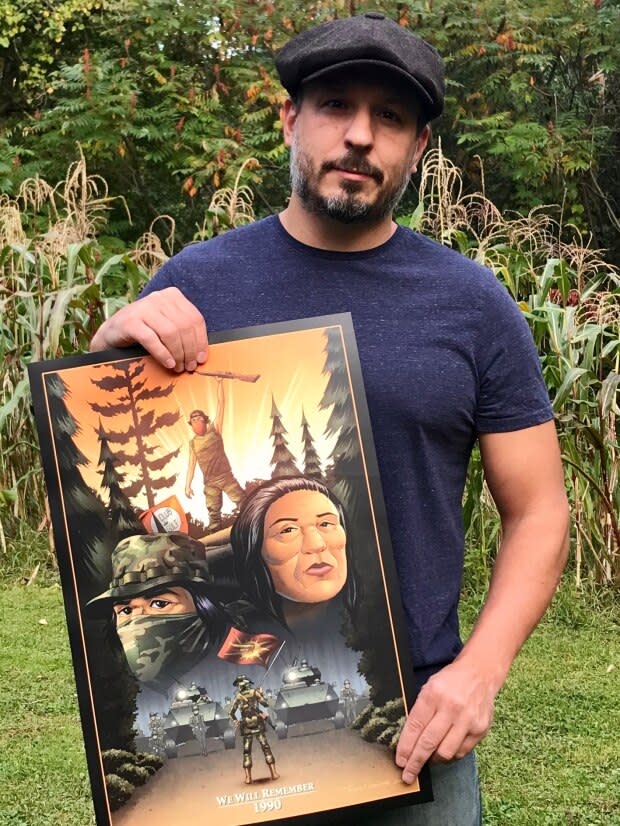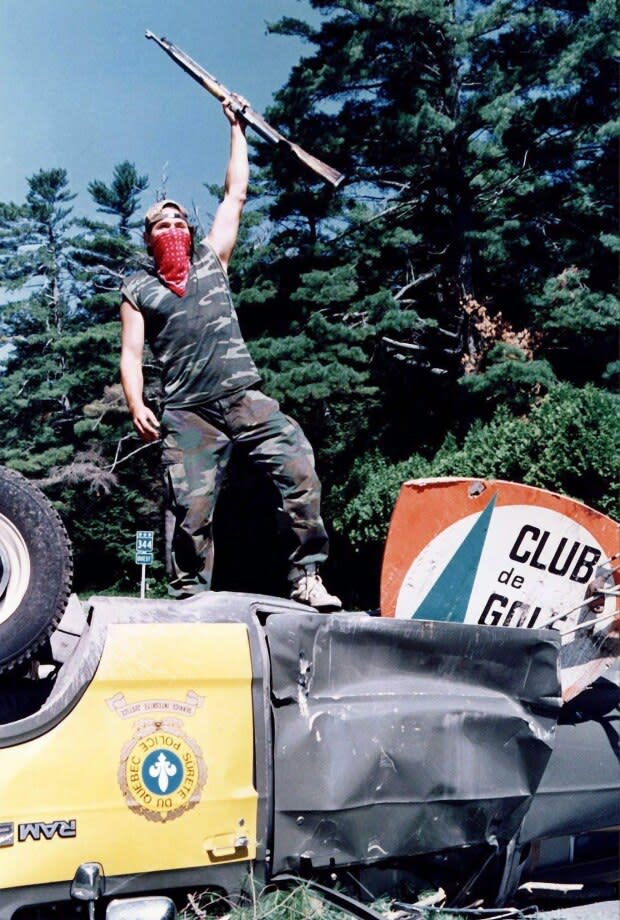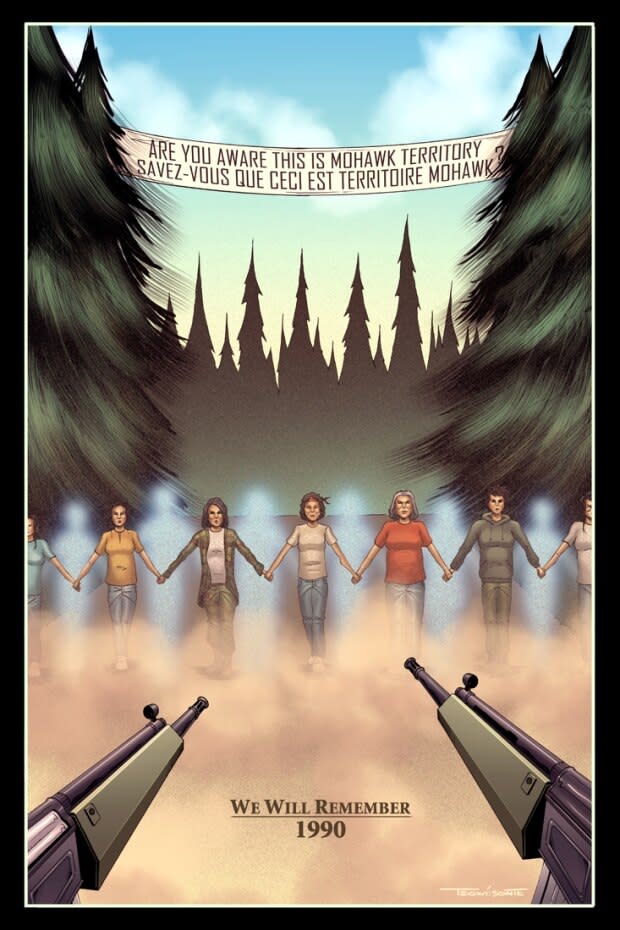Kanien'kehà:ka artist marks Oka Crisis anniversary with thought-provoking illustrations
The summer of 1990 left a lasting impact on Teiowí:sonte Thomas Deer. At just 14 years old, Deer watched his community of Kahnawake, Que., become the focus of newspaper headlines and television broadcasts across Canada as a result of the Oka Crisis.
"As ugly as the events of 1990 were, it was worth the fight. The irony of 1990 is that it made us stronger," said Deer.
"It was a testament to our resolve as Kanien'kehá:ka and our bravery despite the obvious adversity."
The 78-day standoff that began on July 11, 1990, between the Kanien'kehà:ka (Mohawk) community of Kanesatake, the Sûréte du Québec provincial police and, later, the Canadian military was over a contested area of land known as the Pines northwest of Montreal. In solidarity, Kahnawake blocked the Honoré Mercier Bridge that connects the South Shore to the island of Montreal.
Deer now works as the communications co-ordinator for the Kanien'kehà:ka Nation Office in Kahnawake. He is also a comic book artist and illustrator. To commemorate the 30th anniversary of the crisis, he created a series of illustrations to remember how significant the events were to his community, nation, and Indigenous people.

One of the posters, which is being sold at the Nation Office, features Deer's interpretation of one of the most recognizable photographs of the Oka Crisis, taken on July 11, 1990, of a warrior holding up a rifle atop an overturned police vehicle.

He wanted to include a squadron of Canadian troops to represent the disproportionate ratio of Canadian military to Kanien'kehà:ka men, women, and children.
Members of the Royal 22nd Regiment replaced the Sûreté du Québec at barricades starting on Aug. 20, 1990. According to the Canadian Armed Forces, a total of 4,500 armed forces members were involved in the operation.
Honouring Kanien'kehá:ka women

The second poster was conceptualized after a discussion with Kanesatake activist Ellen Gabriel, who felt that media often ignored the integral role of Kanien'kehá:ka women.
"She talked about how it was the women who approached to Sûreté du Québec prior to the attack on the morning of July 11, to encourage peace and avoid violence," said Deer.
"I thought that was an important image to focus on and show their resolve, bravery and their commitment to peace — and how our ancestors were with them that morning."

Deer said the final poster, which has yet to be finished, will focus on the Kahnawake front of the crisis, with imagery of the Mercier Bridge and Battle of Tekakwitha Island. It occurred on when a troop of soldiers raided Kahnawake by boat and helicopter on Sept. 18, 1990, with dozens of community members confronting them with rocks and fists.
The events of 1990, including the experience of volunteering to man the barricades, are what led Deer and many other teenagers on the path of reclaiming culture, tradition and identity at the longhouse, the political and spiritual institution of the Kanien'kehá:ka, Oneida, Onondaga, Tuscarora, Seneca, and Cayuga Nations.
"I was joined by others from my generation who were hungry to learn," he said. "Teens who were already a part of the longhouse were invigorated by 1990."
In the decades that followed, many elders who conducted ceremonies began to die, leaving the responsibility to what Deer called the "blockade generation."
He said it's what has made Kahnawake's longhouse uniquely young and vibrant.
"In contrast to many other Indigenous communities who struggle to maintain their traditions by a predominantly elderly demographic, we can say with certainty that our traditions will continue here, because of our young people who were inspired by 1990."


